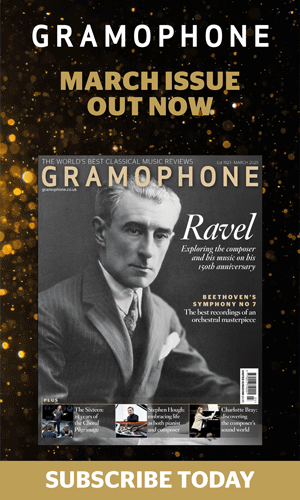The accordion's time has come
Paul Chamberlain
Friday, April 4, 2014
The origins of the accordion can be traced back to the Chinese Sheng, yet the instrument we know as an accordion today, was patented in Vienna in 1829, by Cyrillus Damian. Popular the world over in various forms as a folk instrument, it is only in the latter half of the 20th century that the development of the 'free-bass' system (which allowed for the freedom to move away from the arrangement of pre-set chords on the left-hand side of the instrument) gave accordionists the opportunity to cross into the world of mainstream classical music. My first visit to Russia as a teenager to perform in the Baltic Harmonica Festival in St Petersburg had a profound effect on me, as this was where I first encountered the free-bass accordion. The range of colours, richness of sound and array of repertoire was a revelation to me and on my return home, I decided to change systems not only to ‘free-bass’, but also from piano accordion to the five-row chromatic button keyboard. Many arrangements I had previously played were in some way compromised by the left hand of the instrument, so this new form enabled me to perform complex polyphonic keyboard works such as those by Bach, Mozart and Franck; as well as being able to delve into the ever-growing library of original repertoire which is virtually unknown to the general public.
I have always considered the accordion to be a very expressive instrument and, being a synthesis of both a keyboard and a wind instrument, is capable of sustaining sounds, producing a wonderful variety of timbres from its registers. It has a large dynamic range from ppp to fff.
Much of the Baroque keyboard repertoire can be successfully performed on the accordion, in particular, works by composers such as Bach, Scarlatti, Rameau, and Couperin. Having included works by Bach and Rameau on an earlier disc, my latest CD will feature two sonatas by Domenico Scarlatti. They are typical of the lively virtuoso style that characterises much of his output and requires a lightness and clarity, which, surprisingly to many, can be achieved very successfully with the accordion.
In effect, the accordion can be thought of as a small portable organ, but unfortunately it has long suffered from not being taken seriously by the classical music establishment. However, it is gaining academic credit and with an ever growing original repertoire as well as a vast number of transcriptions, the instrument has an exciting future ahead as it comes to the fore on the concert stage.
Having only in recent years been included into the syllabus of institutions such as Royal Conservatoire of Scotland and St Mary's Music School, I became the first classical accordionist to graduate from the RCS with a BMus Honours degree and subsequently completed a Masters in Performance there also. Being incorporated into the keyboard department, I felt that there was a lot to prove in demonstrating that the accordion could stand on a par with the piano.
In 2013 I became the first accordionist to perform a solo recital in Manchester's Bridgewater Hall as part of the long established 'Manchester Midday Concerts’ series. Through bringing the accordion and its repertoire to fresh audiences (many of whom are astonished at its capabilities), I am striving to continue to build its reputation as a fine concert instrument.
Vladislav Zolotaryov was one of the key innovators who really pushed for the accordion to be accepted by the union of composers in Moscow in the 1970s and his catalogue of original accordion works will ensure that his legacy continues to inspire other players and composers to take an interest in this amazing instrument. My new disc features Zolotaryov's Sonata No 2, a delightful work accessible to all audiences, written in the spirit of a classic Viennese Symphony. In fact, it was one of the first works that attracted me to the classical accordion. The opening melodic theme is beautifully simple, and the whirlwind of excitement in the final movement calls for a technique specific to the accordion called a 'richochet', which results in a four times repetition of the chord by means of the bellows moving primarily up and down as opposed to in and out. In doing this, I maintain the energy right up to the final chord. The use of a similar technique can be seen in this recent video where I perform Khachaturian’s Toccata:
There is a great body of original chamber work for the accordion with many European composers taking an avid interest in writing for the instrument. It has been included in works such as Shostakovich’s Jazz Suite and Hindemith’s Kammermusik No 1. More recently composers such as Sofia Gubaidulina and Sally Beamish have also written for the accordion. Other pieces on my disc are from the repertoire of Argentinean composer Astor Piazzolla, the original exponent of the ‘Tango Nuevo’ style, which brought the music of the Tango dance halls to the concert stage. Originally written for the 'bandoneon' (a very close relative of the accordion), his Tango Sensations, three of which I am recording with the Maxwell String Quartet, transfer effectively onto the accordion and the integral rhythmical accentuations are easily maintained.
I believe that the accordion has an exciting future not only as a solo instrument, but also in chamber ensembles. The accordion opens up an interesting multi-textural sound world to composers and I have plans for a future project that focuses on creating new chamber repertoire for the instrument.







